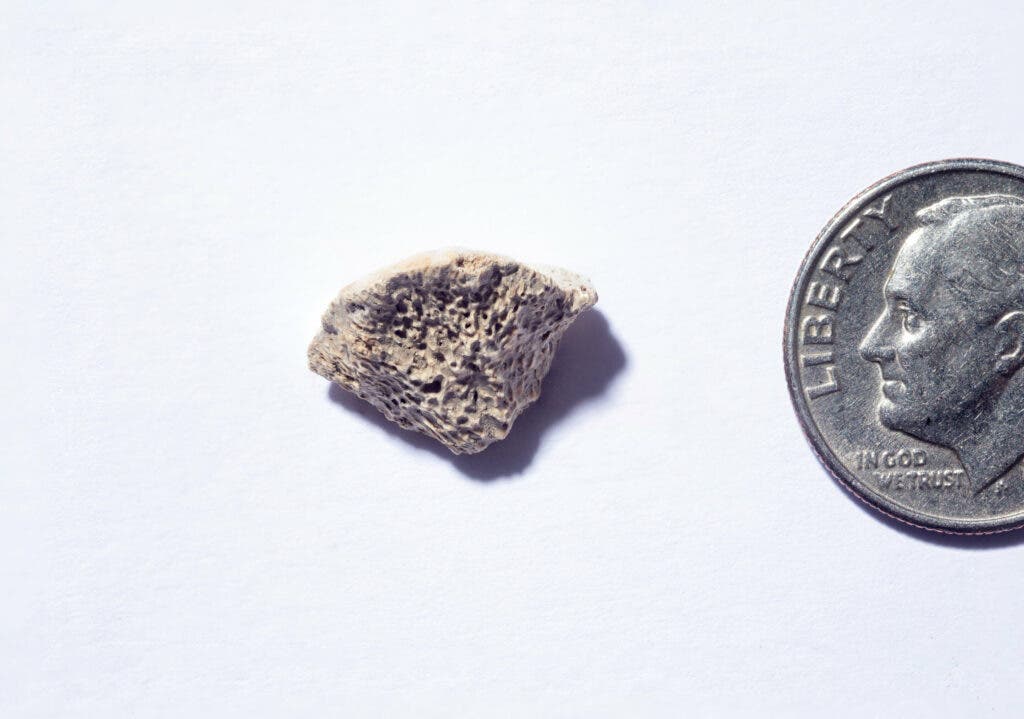A small fragment of a 10,000-year-old dog bone found along the Alaskan coast could be the oldest evidence of domesticated dogs in North America. Researchers believe this could be a piece of evidence regarding the route taken by the first group of people to cross from Eurasia into North America.

Humans are believed to have migrated from Siberia to North America over what is now known as the Bering Strait at the end of the last Ice Age, between 30,000 to 11,000 years ago — with dogs playing an important part. But the exact timing and the route of the human migration (and their beloved canine companions) remains unclear.
Now, a new study by University of Buffalo researchers provides new insight into these questions. The team analyzed a bone fragment found in Southeast Alaska, which they believe belonged to a dog that lived in the region about 10,150 years ago. The bone (a femur) represents the oldest confirmed remains of a domestic dog in the Americas.
“There have been multiple waves of dogs migrating into the Americas, but one question has been, when did the first dogs arrive? And did they follow an interior ice-free corridor between the massive ice sheets that covered the North American continent, or was their first migration along the coast?” co-author Charlotte Lindqvist said in a statement.
The bone fragment was actually found a while ago during excavations on the Alaskan coastal mainland in 1998 and 2003. A lot of bone samples and human artifacts were collected in the excavations, including the remains of the dog, which remained for years in storage until further studies could be carried out. This is where the team of researchers enters the stage.
Initially, they thought the fragment, of about one centimeter (0.4 inches), was of a bear bone. But they later realized it actually belonged to a canine lineage that split from Siberian dogs around 16,700 years ago (Canis lupus familiaris). It’s an almost extinct lineage that went to populate North America alongside indigenous humans.
Detailed analysis (including DNA analysis) confirmed that it was a dog, and also showed that it mainly ate seafood — in line with the findings of a previous study on dog remains in coastal Southwestern Alaska. The dogs likely fed on fish, seal and whale meat hunted by humans. Put all together, the study’s results could be significant to understand the history of human migration into the Americas.
“This all started out with our interest in how Ice Age climatic changes impacted animals’ survival and movements in this region,” Lindqvist said in a statement. “Southeast Alaska might have served as an ice-free stopping point of sorts, and now – with our dog – we think that early human migration through the region might be much more important than some previously suspected.”
Still, while this suggests that the dog came with the human migrants, there’s always the possibility of this being a rogue dog that somehow made its way to North America without humans. It’s not as strange as it seems. Dogs were domesticated from wolves between 14,000 and 29,000 years ago as part of a complex process of interbreeding episodes.
Still, the researchers believe the dog likely lived with humans. In the same cave where the bone was found years ago, human bones and all sets of artifacts were also identified, which suggests that the cave was used by humans. Plus, previous findings showed humans were in the region at that time.
The study was published in the journal Proceedings of the Royal Society B.






